
Brigitte Kowanz: Remember the Future
Galerie Krinzinger, Vienna, AT
With the emergence of radical forms of contemporary art, the importance and relevance of contemporary art are often contested by public opinion. However, throughout history, art has always proven to be important. Is this still the case with contemporary art? In a day and age where people often feel ‘anything goes’ in art, one might tend to answer ‘no’ to this particular question. However, when analyzing our recent (art) history, there is a genuine consensus that contemporary art remains relevant. Let’s discuss why.
Contemporary art is important due to its historical value being a product and witness of a specific time and era. It enables us to state, gain insight, and question certain socio-cultural or ideological/political developments, raising awareness, calling the world to a halt, and encouraging debate.
Art is the blueprint of society. It keeps its finger at the pulse of the world. This article will discuss contemporary art’s different values, indicating its importance to humankind. We will present some clear and concise examples of how contemporary art has been important in our recent history and how it still is up today.
Further, we will discuss why it is important to implement art in an educational context, for instance, by bringing art to the classroom by teaching or going on a class trip to a museum. In what way is it important for our children to get acquainted with art, and do they still have an affinity with contemporary art? Or, why would one study contemporary art?
The historical value of (contemporary) art is the first value we encounter. This value is as important as it has been with any historical period. Art documents a specific moment in history. It is an integral part of our history and collective memory. Furthermore, it is a complex expression of a historical way of thinking resulting from a specific worldview of a particular era. Art is a direct result of a Zeitgeist. For instance, think of Modern Art as the embodiment of the Modernist conviction and belief in progress, a distinctive aspect of the Modern era. Finally, contemporary art registers our documents to the ‘happenings’ or events of our history. For instance, the Feminist Art movement is a historical witness of feminism (cf. infra; Examples of the Importance of Art – How Can Art Influence our Lives?).
Up next, we have the socio-cultural value of art. Art is culture. Arguably, it is an amalgam of cultures. Furthermore, it can question culture and the direction it is heading. For instance, during the post-war era, people were left a bit alienated, seeing the adverse effects of capitalism and consumer culture. As a result, artists reacted to this tendency with, for instance, the art movement of Capitalist Realism by Sigmar Polke and Gerhard Richter, among others. These reactions are very often socially motivated. Art and contemporary art strive for a better world. As a result, contemporary art has a powerful connection with social activism (cf. infra; Examples of the Importance of Art – How Can Art Influence our Lives)
From a political or ideological point of view, contemporary art has great value. As with the socio-cultural significance of art, (contemporary) art can question a particular ideology or political climate. Art is used as a tool for research, using its audience and form as an instrument to create awareness. As a result, a (social) debate follows as a state or society rethinks its political state or ideological beliefs (cf. infra; Examples of the Importance of Art – How Can Art Influence our Lives).
Further, there is the educational value of art. (Contemporary) art is a tool for self-development. As with other forms of cultural expressions – such as film, literature, or performing arts – it enables the individual to evolve as a person, expanding their view of the world or even discovering or creating their viewing point or vision upon a particular matter (cf. infra; Why is Art Important in an Educational Context?)
Although contemporary art has been freed of the so-called tyranny of estheticism, art still has an esthetic value in which we find pleasure, amusement, or joy. This value can take shape in the form of decoration, leisure, or relaxation. In the case of the latter, we view art because we find it appealing and are interested in its qualities, ranging from its esthetic qualities to its radical originality.
To conclude, we must also mention the spiritual value of art. Spirituality and art can often be a slippery slope when it comes to art criticism. However, in this context, I must stress the importance of the spiritual value of art, especially in a contemporary context. Due to the secularization and demystification of spirituality because of science in significant parts of the world, art has become the ultimate form – or the only remaining form – and expression of spirituality. Spirituality has been around for as long as humanity. We urge for a transcendent or meditative experience, a spiritual moment of contemplation or introspection. However, this isn’t always straightforward in a godless and demystified worldview. Art has always carried a particular spiritual dimension. If you think about it, we act similarly in a museum as we would in church. We are silent and serene while beholding the ‘sacred’ objects, the artworks on display. They nourish our souls.
At first, art may seem to be a very passive part of history. However, there is actual power in art. For instance, art can influence a single person’s vision, or even more, of an entire nation. It can create a great discourse in which awareness is raised for specific issues or topics, putting pressure on world leaders or changing the identity and vision of a generation. By doing so, we arrive at one of the most essential characteristics of art, which is how it can influence our lives, indirectly as well as directly. Allow me to illustrate how art can impact the world with the following case studies:
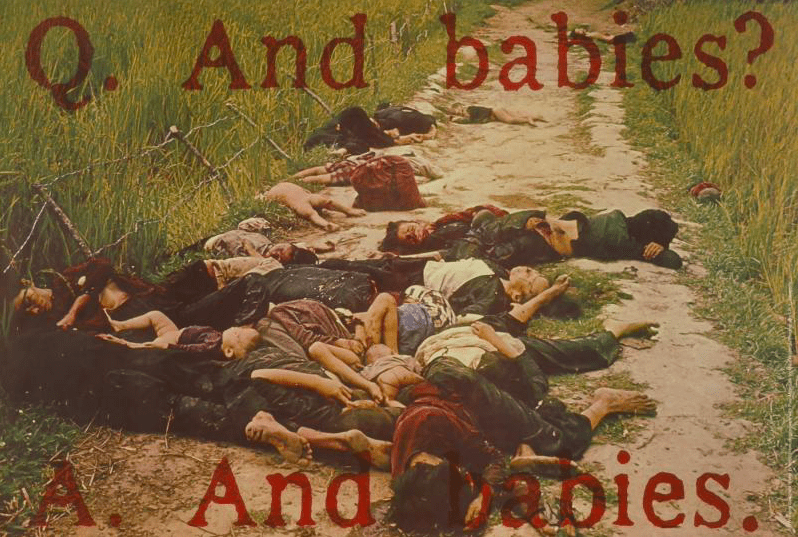
A group of New York artists, better known as the Art Worker’s Coalition (AWC), printed and distributed fifty thousand copies of this poster as an act against the horror and war policy of the United States after the My Lai Massacre, where the US Soldiers murdered hundreds of innocent and unarmed civilians in South Vietnam, including babies. As a result, a shockwave emerged as people became aware of the terrors, condemning the violence, contributing to the wave of social activism of the 60s and early 70s.
Although the HIV epidemic seems to be something of the past, AIDS was an increasingly problematic phenomenon in the 80s, especially in a city such as New York. Moreover, sadly, the HIV epidemic leads to stigmatizing the LGBT community. But art resisted with political art and activism, reacting to the crisis in their own way. Artists started to draw attention to the problem and stopped the stigmatization and demonization of the victims, most often from the LGBT community. Thanks to art, the debates were opened, and the crisis was addressed. Money was raised, and research started to handle the crisis instead of repudiating and claiming it was a punishment for their ‘unnatural’ sexuality.
Many artists were directly affected by AIDS, as they lost friends, were confronted with increased homophobia due to HIV, or were victims of AIDS. Keith Haring was diagnosed with AIDS in 1988. As an artist, he didn’t only fight AIDS in the hospital. He also fought it in his studio and on the street. “Silence means death, fight aids and act up!”
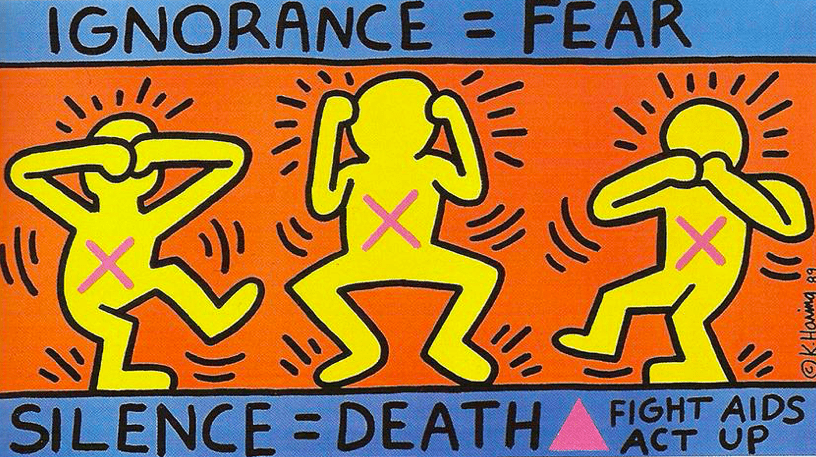
In the 70s and 80s, Feminism became a major topic in the contemporary art scene. First, the art historian Linda Nochlin published in 1971 her famous article Why Have There Been No Great Women Artists?, followed by multiple female artists who used art as an instrument to fight inequality in the art world and beyond.
An important actor was the Guerrilla Girls, who actively fought for the inclusivity of women and non-white artists at major institutions. One of the most iconic artworks is the banner-poster Do Women Have To Be Naked To Get Into the Met. Museum?. The poster resulted in consternation and raised awareness of this problem, questioning the establishment.
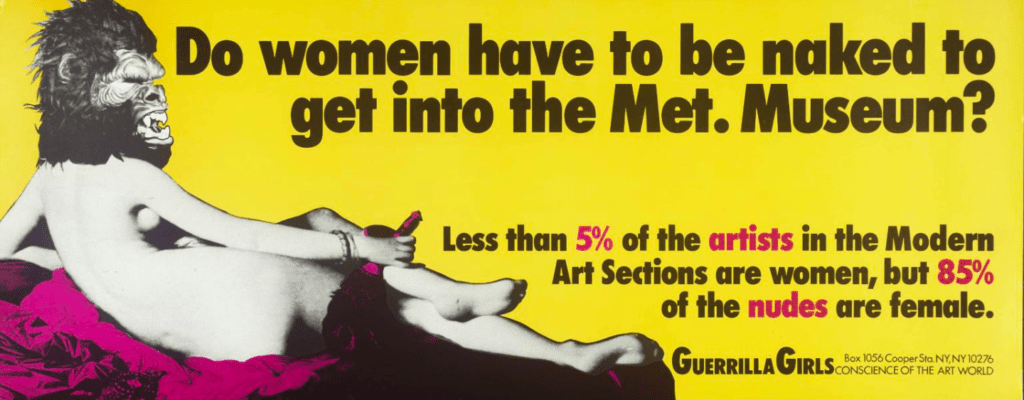
As stated before, social activism is strongly connected to art, also when it comes to race. A great example can be found in the works of Kerry James Marshall. Marshall questions the marginalization of African Americans by depicting them in a very characteristic and deep black. In doing so, Marshall comments on the history and identity of black subjects, excluded from the canon of Western art exploring issues of race and cultural history.
Another example combining racial discrimination and sexual orientation is Kehinde Wiley. The monumental portrait by Wiley depicts young black men in a sensual and often sexual manner, using references or settings of traditional formats and motifs in a contemporary and photographic manner. His work is characterized by the notion of gay and black men juxtaposed with a historical and Western setting, but he intends to go beyond. One would say Wiley reverses the roles of cultural appropriation in his work, appropriating ‘white culture’ by black men. However, this western culture and history are also his history. In doing so, Wiley’s work does not originate from stereotypes yet from the desire to complicate notions of group identity.
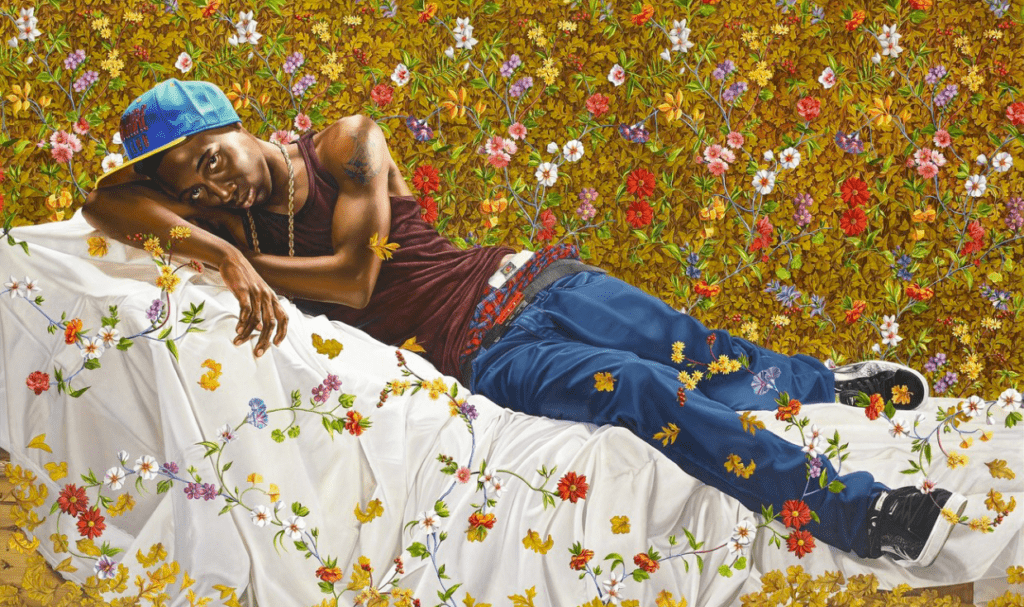
We conclude our case studies with a very actual topic, global warming, and environmentalism. Hundreds of artists find inspiration in global warming for their artistic practice. Moreover, they engage their audience in participating in this discussion, raising awareness, and raising funds. Think of Olafur Eliasson, who states, “It is not about decorating the world… but about taking responsibility.”
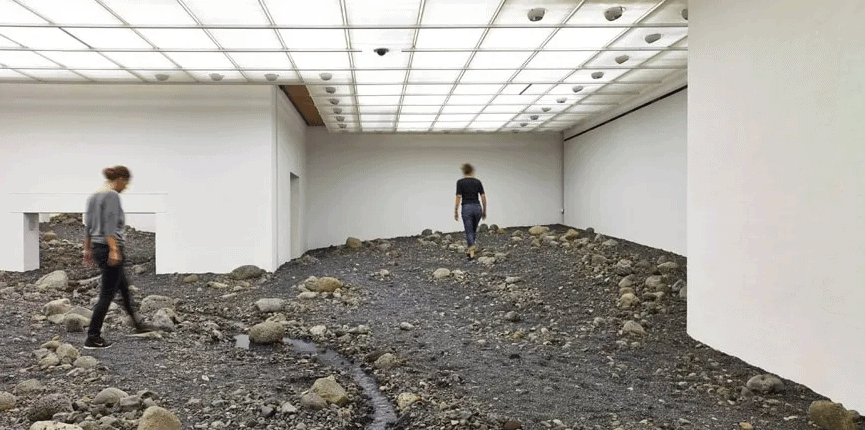
The values and case studies mentioned above speak for themselves about why contemporary art and art, in general, are important. As a result, it is obvious to state why it is important in an educational context. However, to conclude, I would like to add a few notes.
Art encourages expression, creativity, self-development, a critical mind, and the ability to reflect on culture and, therefore, the world. By getting to know our history, students create a cultivated, critical, historical frame of reference, enabling them to put certain things into perspective.
It is crucial for students to get acquainted with art from a relatively young age. Although art may often seem as something elusive or exclusive, it is, in fact, very democratic and accessible to all ages. It is a typical misconception art is very ‘serious’, and we must always be very intellectual when visiting a museum and that all museums ‘are boring’. There is no pretext at all to see an exhibition. We can enjoy watching artworks, hearing their stories, or encountering humor in them.
Most art galleries are free of charge to visit, and art museums do their very best to keep ticket prices as low as possible. As a result, we highly encourage you to take your children to the playground and visit an art exhibition every now and then. You would be surprised to see their reaction!

Galerie Krinzinger, Vienna, AT

Tutorial & Template